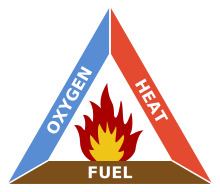Information
-
Add media
-
Audit Title
-
Document No.
-
Client / Site
-
Conducted on
-
Prepared by
-
Location
-
Personnel
Applicable Legislation and relevant codes of practice.
-
The Fire (Scotland) Act 2005 & The Fire Safety (Scotland) Regulations 2006
BS 9999: 2017 – Fire safety in design, management, and use of buildings
Health & Safety at Work Act 1974
BS 5499-10: 2014 Safety Signs including fire safety signs
BS 5499-4: 2013 Code of Practice for Escape route signs
BS EN ISO 7010: 2011 (Replaces The Health & Safety (Safety Signs and Signals) Regulations 1996)
Electricity at Work Regulations 1989
Equalities Act (2010) Building Standards Technical Handbook 2022: Non-Domestic
BS 5839-6: 2019 Fire Detection and Alarm Systems
BS 5266-1: 2016 Emergency Lighting
BS 5306-3: 2017 Fire extinguishing installations and equipment on premises…
BS 5588-1: Fire Precautions in the design, construction, and use of buildings. Code of Practice for residential buildings
BS = British Standard
EM = European Standard
ISO = International Standards Organization
Legal Requirements.
-
The effect of the regulations is that not only does the employer need to make suitable arrangements for fire precautions in the workplace; they should also undertake a
Risk Assessment of the workplace with particular regard to fire safety.
The effect of this risk is that the employer will identify those areas, if any, which need attention to lessen the risk to employees and visitors to the premises from the fire.
The Fire (Scotland) Act 2005 Section 53 contains an employer’s duty to ensure the fire safety of employees in respect of a workplace. The effect of this section is to give
employers responsible for the safety of their employees in case of fire. This applies even where others also have obligations in respect of the premises. An employer’s
obligations in respect of the fire safety of non-employees sit within section 54.
The Fire (Scotland) Act 2005 Section 54 identifies the persons who have responsibility for the fire safety of premises to which Part 3 applies, to ensure the fire safety of
‘relevant persons’ in relevant premises. “Relevant persons” are persons who are or may be lawfully on the premises and persons in, or who may be in, the immediate vicinity of
the premises whose safety would be at risk in the event of a fire in the premises.
Guidance.
-
From The Fire (Scotland) Act 2005 the Risk Assessment must comply with the following:
1. Employers must carry out a Risk Assessment to identify risks to employees at work and others in connection with the undertaking.
2. The employer must review the assessment if there have been changes to the premises, work processes, or where the assessment is no longer valid.
3. If there are five or more employees then the significant findings must be recorded.
4. Employers must appoint a competent person(s) to assist them to comply with their obligations. (A competent employee should be used in preference to a nonemployee).
5. Employers who share buildings must make all employers in the building aware of the risks they have identified.
6. The employer should advise any contractors’ employers of any fire risks and the measures taken to comply with The Fire (Scotland) Act 2005 & The Fire Safety
(Scotland) Regulations 2006.
7. The employer should provide his/her employees with information regarding the risks identified and the measures taken to ensure their safety.
NB These notes are a précis of the requirements and are not intended to give the strict legal interpretation of the regulations. Reference should be made to the
Regulations themselves and any Home Office published guidance for such purposes.
Part 1: GENERAL INFORMATION
The responsible person for fire safety
-
Name of the responsible person
-
Contact details of responsible person
1 The Building
-
Number of Floors
- 1
- 2
- 3
- 4
- 5
- 6
- 7
- 8
- 9
- 10
-
Floor area: (m2 per floor)
-
Floor area: (m2 total)
-
Brief details of construction:
-
Occupancy type:
2 The occupants
-
Maximum number of occupants:
-
Maximum number of occupants at any given time:
-
Maximum number of members of the public at one time:
3 Occupants at special risk
-
Number of children employed at the premises?
-
Number of sleeping occupants?
-
Number of disabled occupants?
-
Number of occupants in remote areas?
-
Number of lone workers?
4 Previous Fire loss experience
-
Any previous history of fire loss in the premises. (If any history, give details)
5 Other relevant background
-
Any residential properties in or attached to the building
-
Is there a prohibition notice in force? (if yes, give details and date of issue)
-
Is there an alteration notice in force? (if yes give details and date of issue)
-
Is there an enforcement notice in force? (if yes give date of issue and date of when work is to be completed by)
Part 2: FIRE HAZARDS AND ELIMINATION OR CONTROL
6 Electrical sources of ignition
-
Are reasonable measures taken to prevent fires of electrical origin?
-
Is the fixed wiring installation periodically tested and inspected?
-
Are portable appliances tested/inspected?
-
Is there a suitable policy about the use of personal electrical appliances?
-
Is there a suitable limitation on the use of trailing leads and adapters?
-
Is all electrical equipment tested and records on site
7 Smoking
-
Are reasonable measures taken to prevent fires as a result of smoking?
-
Is smoking prohibited in the building?
-
Are there suitable arrangements made for those who wish to smoke?
-
Is the smoking policy being adhered to?
-
Is the appropriate smoking prohibition notice displayed at the building's entrance?
8 Arson
-
Does the basic security against arson appear reasonable?
-
Is there sufficient control of unnecessary fire load in close proximity to the building or available for ignition by outsiders?
9 Portable heaters and heating installation
-
Is the use of portable heaters avoided as far as reasonably practicable?
-
If portable heaters are used, are the more hazardous types (radiant bars and LPG) avoided?
-
If portable heaters are used are suitable measures taken to minimise the risk of ignition of combustible materials?
-
Are fixed heating installations subject to regular maintenance?
10 Cooking facilities
-
Are reasonable measures taken to prevent cooking fires?
-
Are filters changed and ductwork cleaned regularly?
-
Are suitable extinguishers available?
11 Lightning
-
Does the building have lightning protection system if required? (if yes has it been tested and are records of testing kept)
12 Other significant ignition sources that warrant consideration
-
List any other ignition sources:
13 Housekeeping
-
Is the standard of housekeeping adequate?
-
Are combustible materials separated from ignition sources?
-
Is the unnecessary accumulation of combustibles and waste avoided?
-
Is there appropriate storage of hazardous materials?
-
Are combustible materials stored appropriately?
14 Hazards introduced by contractors and building works
-
Is there sufficient control over works by contractors (e.g. Permits to work & hot works permits)?
-
Are there arrangements for the safe storage of gas bottles and others hazardous materials?
-
Are fire safety conditions and instructions communicated to contractors?
15 Dangerous Substances
-
Are there any dangerous substances on the premises?
-
Has the risk to relevant persons been adequately eliminated or reduced?
Part 3: FIRE PROTECTION MEASURES
16 Means of escape
-
Is the building provided with adequate means of escape in case of fire?
-
Are there sufficient exits?
-
Are exits easily and immediately openable where necessary?
-
Do fire exits open in the direction of travel where necessary?
-
Have sliding or revolving doors been avoided as fire exits?
-
Are there adequate means of securing exits?
-
Are there reasonable distances of travel where there is a single direction of travel?
-
Are there reasonable distances of travel where there are alternative means of escape?
-
Are escape routes adequately protected?
-
Are there suitable fire precautions for all inner rooms?
-
Are escape routes unobstructed?
-
Are there suitable means of escape for disabled occupants?
17 Measures to limit fire spread and development.
-
Is there a sufficient standard of compartmentation and sub-compartmentation?
-
Are linings that promote fire spread avoided as far as reasonably practicable?
18 Escape lighting
-
Is there a reasonable standard of escape lighting provided?
19 Fire safety signs and notices
-
Are fire safety signs and notices suitable and sufficient?
20 Means of giving warning in the event of fire
-
Is a manually operated electrical fire alarm system provided?
-
Is automatic fire detection provided?
-
Is there remote transmission of alarm signals?
21 Manual fire extinguishing appliances
-
Is there suitable and sufficient provision of portable fire extinguishers?
-
Are hose reels provided?
22 Relevant automatic fire extinguishing systems
-
Type of system:
-
Comments and observations:
23 Facilities, equipment and devices for the protection of Fire-Fighters
-
Types of facilities:
-
Comments and observations:
Part 4: MANAGEMENT OF FIRE SAFETY
24 Procedures and arrangements
-
Person responsible for fire safety:
-
Are there competent persons available to assist in implementing fire safety arrangements?
-
Are appropriate fire procedures in place? (including arrangements for calling the fire service)
-
Fire Emergency Plan in place and details recorded?
-
Does the plan take account of other Fire Emergency Plans applicable in the building?
-
Is the Fire Emergency Plan readily available for staff to read?
-
Are there persons nominated to respond to a fire situation and assist with evacuation
-
Is there a procedure for providing a Personal Emergency Evacuation Plan (PEEP) if required for any service user.
-
Is there appropriate liaison with the fire service?
-
Do routine in-house inspections of fire precautions take place?
25 Training and drills
-
Are staff given instruction on induction?
-
Do staff receive periodic refresher training at suitable intervals?
-
Are staff with special responsibilities given appropriate training, eg Fire marshals or Wardens.
-
Are fire drills carried out at appropriate intervals?
26 Testing and maintenance
-
Is the workplace adequately maintained?
-
Is there weekly testing and periodic servicing of the fire detection and alarm system?
-
Is there monthly, six-monthly and annual testing of the emergency lighting?
-
Is there annual maintenance and testing of fire extinguishing equipment?
-
Is there annual inspection and test of the lightning protection system?
-
Is there six monthly and annual testing of wet/dry risers?
-
Is there weekly testing and periodic inspection of sprinkler installations?
-
Is there routine checks of fire doors and final exit doors?
-
Other relevant inspection and test
27 Records
-
Are there records of fire drills?
-
Are there records of fire training?
-
Are there records of fire alarm tests?
-
Are there records of emergency lighting tests?
-
Are there records of maintenance and testing of other fire protection systems?
Part 5: RISK RATING AND RECOMMENDATIONS
-
Risk Items
-
Item 1
-
Probability (likelihood of fire)
-
Consequence (impact on life safety)
- 1 = Minor injury (No 1st Aid)
- 2 = Minor injury (1st Aid)
- 3 = Injury (Dr/Hospital treatment)
- 4 = Major injury (Disability)
- 5 = Fatality
-
Risk rating score (probability x consequence)
- 1
- 2
- 3
- 4
- 5
- 6
- 7
- 8
- 9
- 10
- 11
- 12
- 13
- 14
- 15
- 16
- 17
- 18
- 19
- 20
- 21
- 22
- 23
- 24
- 25
-
Recommendations
-
Action
Re-Assessment
-
Received on behalf of client.
-
Fire Risk Assessor
-
Recommended date for re-assessment










